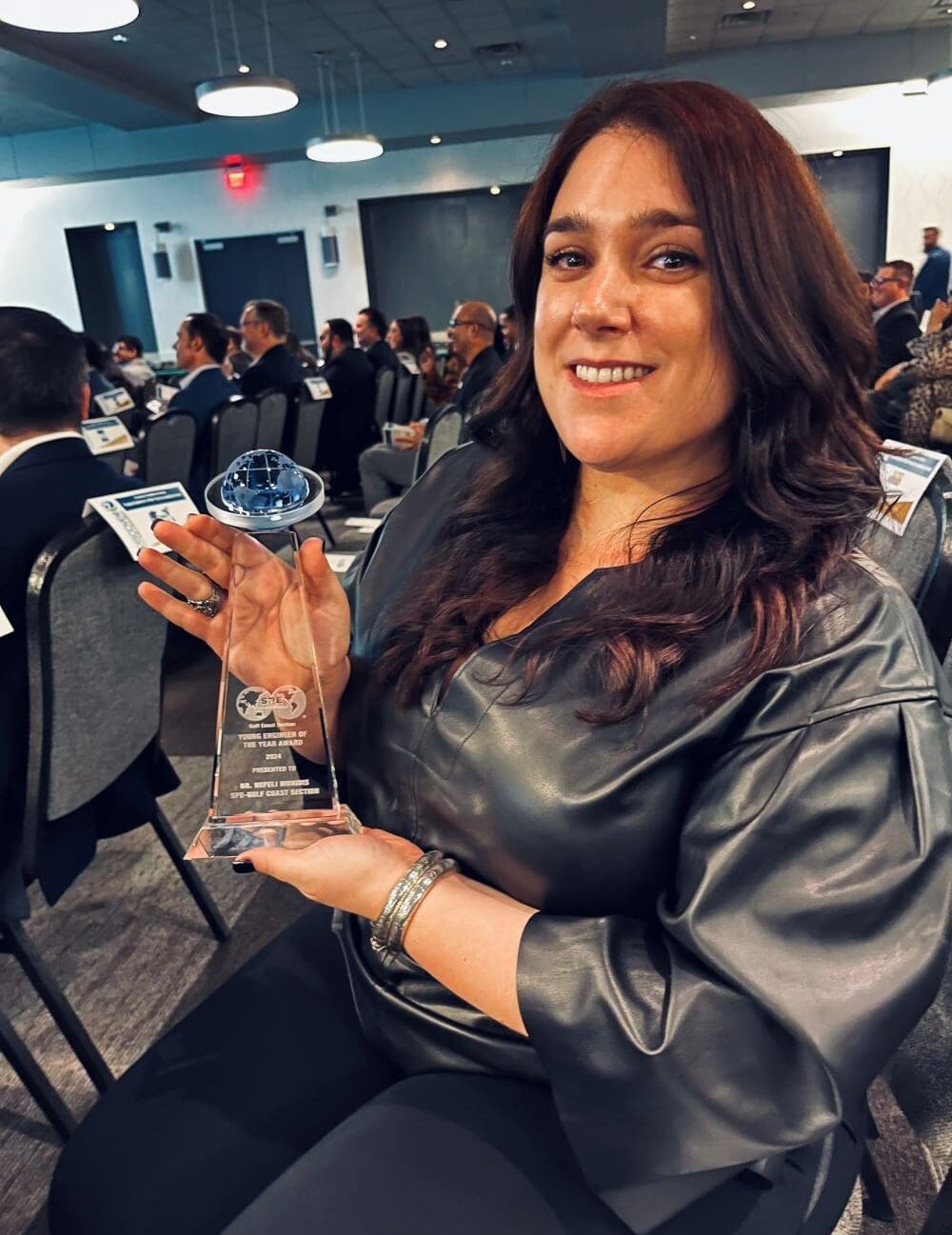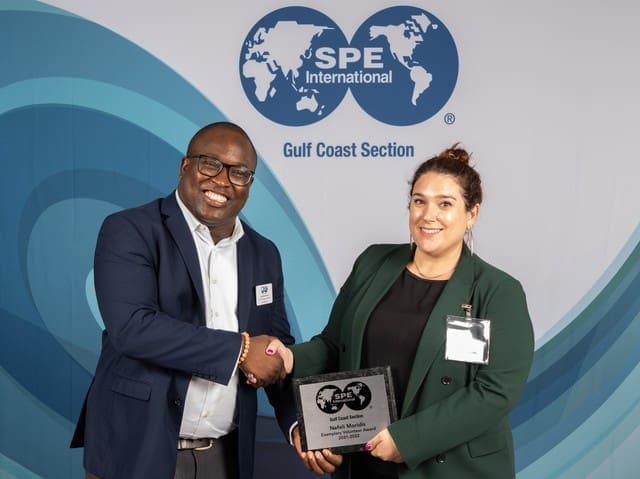Chris Dao: Let’s kick off with an ice breaker – what are three fun and/or unusual facts about yourself/your career?
Nefeli Moridis: Three fun facts:
- I speak four languages (English, Greek, French and Spanish).
- I love to travel and learn how to cook different cuisines from the places I have visited. I am currently trying to perfect a chawanmushi dish that I had in Japan last year. Before this, I was perfecting my focaccia recipe.
- I worked as a reservoir engineer, a consultant for unconventional projects globally, and then made the switch to tech almost four years ago.
CD: What’s hot right now for energy tech? Any current projects you’re most proud of?
NM: We are seeing a lot of work in leveraging physics AI solutions for accelerating simulation in carbon capture and storage (CCS) projects. These projects are important in energy-transition work, and it is great to see that the industry is adopting more solutions to help with this effort.
We recently released a paper with Shell and CalTech, based on work done by Dr. Gege at Stanford, which showed a 10,000x acceleration in CCS simulation.
NVIDIA Earth-2 platform for climate and weather forecasting enables energy companies to better predict renewable energy generation (solar, wind) and energy traders to make faster and more informed decisions using AI ensembles (MetDesk/NVIDIA collaboration).
We are also seeing a lot of exciting uses for generative AI in energy, and it is exciting to see how the industry is leveraging this technology in several parts of the energy industry.
CD: Tell us more about where you see the energy industry steering, in terms of tech and infrastructure.
NM: In terms of tech, I think we will continue to see more and more AI models leveraged to accelerate different solutions. As mentioned before, I anticipate that these AI solutions will continue to aid in the energy transition. For example, for CCS, we require accelerated solutions for simulation because we are forecasting for centuries and not decades as we would for traditional reservoir simulation models. Additionally, there is a monitoring aspect required for these projects. At EAGE this year, they mentioned for any $1B spent on these projects, at least $500M will be required to be spent on monitoring. By accelerating these solutions with AI and accelerated computing hardware, we can enable this work within the energy industry.
Speaking of infrastructure, power constraints of running AI projects is a topic that has come up regularly in discussion. We’re working on optimizing our hardware by making them more power-efficient, and our current Grace-Hopper architecture already shows 40 to 50 percent less power required to run AI and HPC workflows. Here is a recent publication highlighting these results.
CD: What are your tips for young women entering energy and tech?
NM: If it is an industry that excites you and that you are passionate about, continue to be involved with industry societies, like the Society of Petroleum Engineers (SPE). I would also encourage you to look at what ongoing projects excite you today, and what it takes to get on those teams and work on those projects if you are not there yet. Expressing your interest in those groups in your management and the groups in the organization you work for.

It is a challenging field but that is also what makes it exciting. Find mentors that you can trust and run your thoughts and ideas for your career and future by, and that can give you different perspectives. I would also encourage you to mentor the younger generation of girls and young women interested in STEM. I have been engaged with an organization called “1000 Girls, 1000 Futures” for girls ages 13 – 18 that are interested in STEM. Sharing your experience with them will also inspire them to continue.
CD: Tell us more about unique strengths you bring as a female tech leader that make you more effective.
NM: Know your stuff. Be confident in your knowledge and make sure you keep learning as this is an extremely dynamic industry.
- Lead with compassion.
- Be able to pivot quickly and never stop learning. This requires constant learning which is key to being a successful engineer and leader.
- Do not be afraid to fail. We all make mistakes; we are also always learning new skills (both soft and technical).
CD: What are some examples of barriers you’ve overcome as a female leader in a male-dominant space?
NM: I have always worked in a male-dominated field. There have been times that I have been treated with bias and it is incredibly frustrating. And I am, often, the only woman in both technical meetings and executive meetings. It is important to remember that your voice is important, and your contributions are as valuable as anyone else’s in the room. You deserve to be in the room, you have earned your seat, and do not let anyone tell you otherwise.

I have this discussion with many of my female friends who are in other male-dominated fields. We were not given special treatment to get to where we are, we have earned our success. It is important to remember this.
CD: What would you tell yourself five years ago about persevering through these challenges?
NM: Always advocate for yourself. I have learned that nobody will stand up for you or act in your best interest better than you can. This includes negotiations for your job and pay, in the way you are treated in your workplace, and in your day-to-day work.
Keep going.
CD: There are a lot of women who temporarily leave the workforce, whether for family or another degree. Could you share some of what you have learned in pivoting your career using this launchpad?
NM: What I would say about pivoting my career: My subject matter expertise was a key component of this pivot. The second aspect is learning new skills that I did not learn prior to making this change. If you are interested in pivoting your career, identify what technical skills you will need in the role or the industry you would like to join and begin learning those. Also, remember that new skills can be learned, and other skills are transferable and can be leveraged in a new industry or role.
CD: Tell us more about your work shepherding more Women and Minorities into Energy Tech. Are there upcoming NVIDIA events you’re keen on?
NM: I am actively engaged with SPE and volunteer on several conference committees. I am also asked to speak at many different industry events and sit on panels. This allows me to advocate for more women and minority presenters because there are so many incredible people working in this industry that often are not given the opportunities to present.
I also present at Texas A&M SPE’s section every semester, presenting to the undergraduates and graduate students on what is possible after graduation.
The next NVIDIA event is GTC. We had an incredible showing at this year’s conference in March, with several energy-specific sessions, and I look forward to continuing to grow the energy presence and presentations.
- Advancing the Energy Transition with AI-Powered Innovation
- Building a Lower-Carbon Future with HPC and AI in Energy
- Pioneering the Integration of an AI Assistant into a Seismic Data Processing Workflow
- Accelerating Linear Solvers on NVIDIA Grace
Events that NVIDIA is engaged with, and we have planned announcements, include the IMAGE conference, AWS Energy Symposium, ATCE, ADIPEC, and the SLB Forum.
Headline image: Nefeli Moridi receiving an SPE award.
Chris Dao is an accomplished energy industry tech leader. He graduated in 2015 from the University of Texas at Austin and has worked as a software engineer with big names like Microsoft and Chevron. In his free time, he serves on engineering society leadership boards, like the Society of Petroleum Engineers (SPE), and is passionate about shepherding women and minorities into the tech industry.






